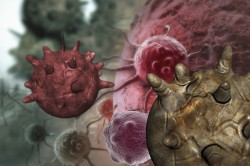
Some recent research that specified a faster and simpler method for making stem-cell s just might get retracted because one of the two scientists involved in the research project has expressed doubts about the premises regarding their experiments.
It was Teruhiko Wakayama, a researcher at the University of Yamanashi, Japan, who stated he was no longer certain about the premise of the data he used. During an interview with Japan’s largest international news service, NHK World, Mr. Wakyama said his research studies should be withdrawn from review. His comments with the NHK news service emphasize the peer pressure that medical researchers experience with Japan’s push into stem-cell science subsequent to the Nobel Prize won by Shinya Yamanaka from KyotoUniversity in 2012.
Early Stem-Cell Therapy Developments
Basically, during an embryo’s early stages of development, stem cells are pluripotent, which mean they can become any type of tissue in a patient’s body. As the embryo continues to develop, the stem-cell s begin to specialize by differentiation into units for the body’s different tissue structures.
There are currently several ways to regenerate pluripotent stem cells, including one method that uses embryos and another method that reprograms matured stem cells by inserting genes.
However, the controversial studies submitted by Mr. Wakyama discovered that ordinary cells taken from newborn mice could be transformed into stem-cell s without adding genes. Instead, researchers (led by Haruko Obokata at the RikenCenter for Developmental Biology) shocked the cells with a dose of “sublethal stress” like mechanical force to trigger the transformation into stem-cell s.
According to Nissim Benvenisty, director of the stem-cell therapy laboratory at HebrewUniversity in Jerusalem:
“The study surprised me when it came out because it contradicted the common sense that we have acquired so far in the field. At the same time, this is the beauty of the scientific world, in which editors allow publication of papers that contradict common sense to allow novel data to be discussed and understood.”
Global Pressure for Stem-Cell Therapy Accomplishments
Global competition within the medical science field is well recognized. In 2013, Japan’s Health Ministry cleared the way for the world’s first clinical trial with stem-cell s made using a separate technique from Shinya Yamanaka, the Nobel Prize winner from KyotoUniversity. And, Japan’s Prime Minister Shinzo Abe aims to cement his country’s leadership in the field of Stem-Cell therapy research. He has pushed through bills that fast-track regulatory approval for cell-based products and set new research guidelines.
Regarding the research and paper submitted by Teruhiko Wakayama, Japan’s Riken research center (a government-funded organization) will continue an investigation of the two studies published January 2014 in the journal, Nature, and will consider its options including retracting them from publication.
Still, the word is out.. There might be a faster and simpler method for making stem cells, and influencing stem-cell therapy.



